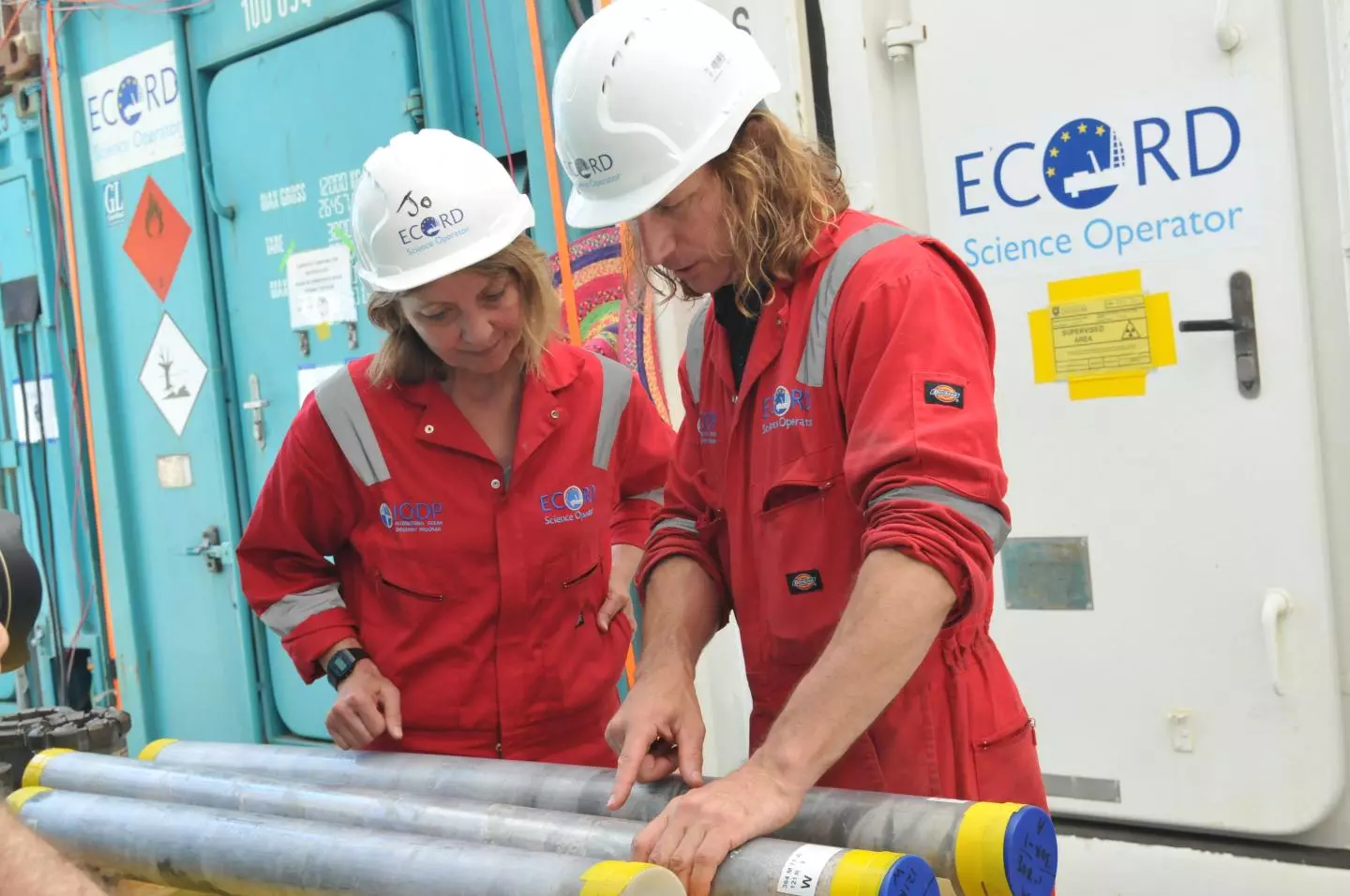Almost 66 million years ago, a huge asteroid slammed into the Earth and changed it forever. Roughly three quarters of all life on the planet was wiped out, including the dinosaurs, and the scar is still visible as a gigantic crater under the Yucatan Peninsula in Mexico. Now a drilling expedition to the crater has turned up new details of the immediate aftermath of this world-changing impact.
The current hypothesis is that an asteroid more than 10 km (6.2 mi) wide was responsible for the impact. Any living creatures near the impact zone would have been instantly killed of course, but it was the longer-lasting effects that caused most of the deaths worldwide. Wildfires were set ablaze, towering tsunamis rippled outwards, and so much vaporized rock and dust was flung into the atmosphere that it blocked the Sun completely for 18 months. That would trigger global cooling and disrupt photosynthesis, killing plants and in turn causing the food chain to collapse.
Most of these details are theorized from models and simulations of what should happen during and after these extreme events. To find direct evidence, scientists conducted a drilling expedition in 2016 to the Chicxulub crater, which has been linked to the dinosaur-destroying impact. The team drilled down to retrieve rocks from between 500 and 1,300 m (1,640 and 4,265 ft) below the ocean floor.
The latest batch of results from this drilling study have now filled in some of the finer details of what happened in the hours and days following the impact. The most eye-catching detail they noticed was that as much as 130 m (425 ft) of material was deposited in just one day. That makes it one of the fastest rates of accumulation ever found in the geological record.

Having so much sediment pile up so fast also did a great job of flash-preserving the scene of the crime. Some of the key things found by the researchers include pieces of charcoal, melted and broken rocks like sandstone, limestone and granite, sand that had been deposited by resurging waters, chemical biomarkers of fungi, and a lack of sulfur.
So what does all that mean? The melted and broken rocks speak for themselves – an impact like this is expected to put some strain on the ground it hits. The rest of the material tells the tale of a burnt, devastated landscape that gets dragged into the crater after a tsunami that would have reached heights of several hundred meters.
The backflow of this huge wave deposited sand on the bottom quickly, along with charcoal from the widespread wildfires, and molecules like perylene which are created by soil fungi.
But the most telling discovery was actually what wasn’t found in the sediment. The team found no trace of sulfur in any of the samples, which is odd because the regular rocks around the area are quite high in the stuff. This absence supports a long-standing theory that sulfur would likely be vaporized in the impact, gathering in the atmosphere and contributing to the global cooling that followed.
These new discoveries give us a more complete picture of that fateful day. Another recent study found piles of fossilized fish on the shores of an ancient river some 3,000 km (1,865 mi) away from the impact site. The shock waves from the asteroid are believed to have tossed them all onto the shore where they died together, buried in mud and surrounded by debris falling from the sky.
Another study calculated that if the asteroid had stuck almost anywhere else on the planet, the dinosaurs might have survived.
The new research was published in the journal Proceedings of the National Academy of Sciences.
Source: University of Texas at Austin






